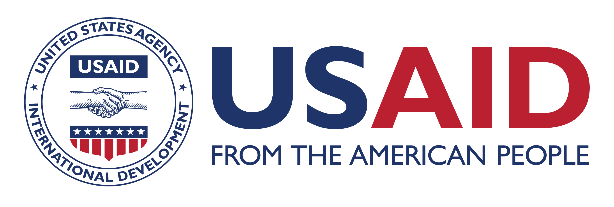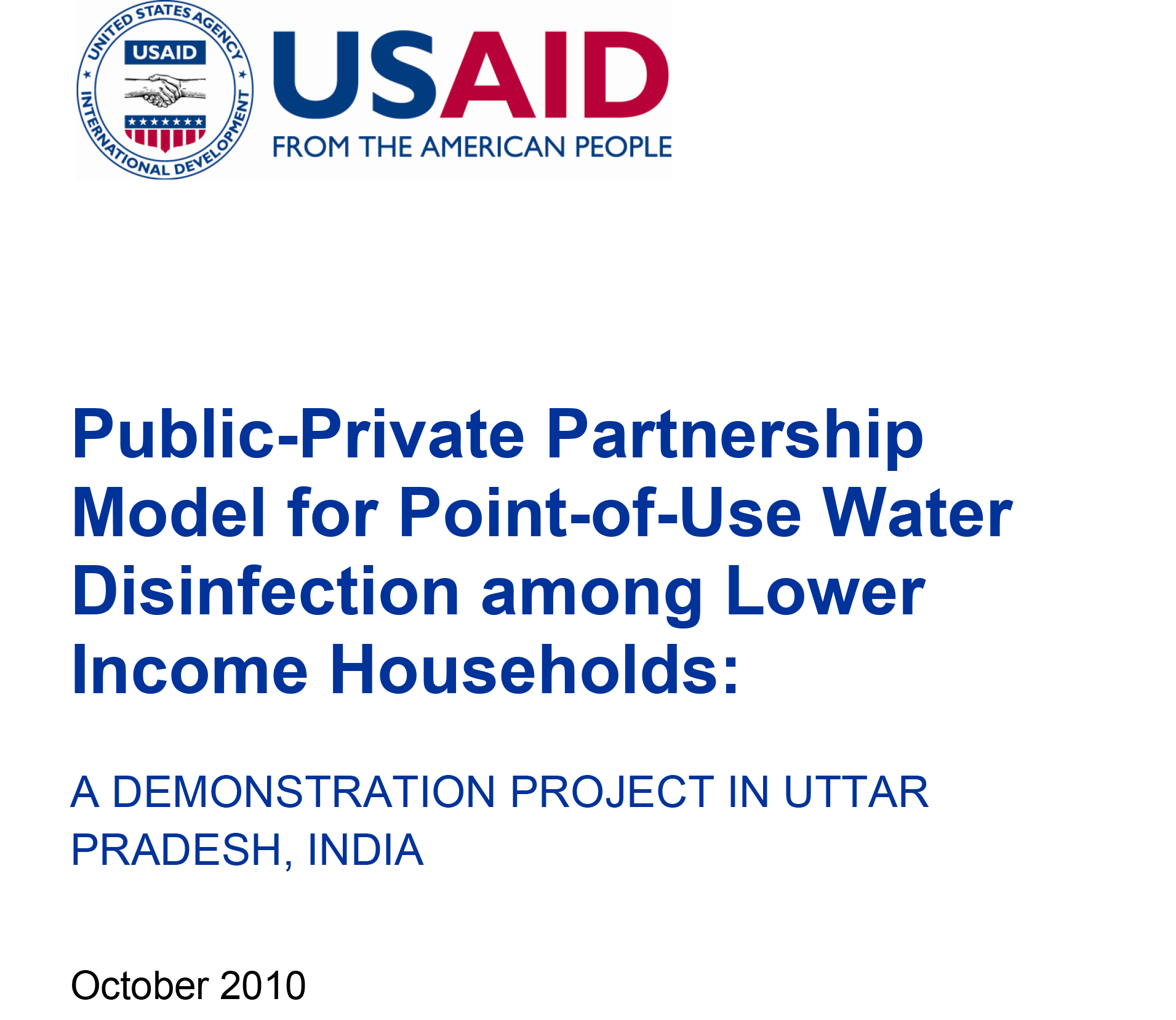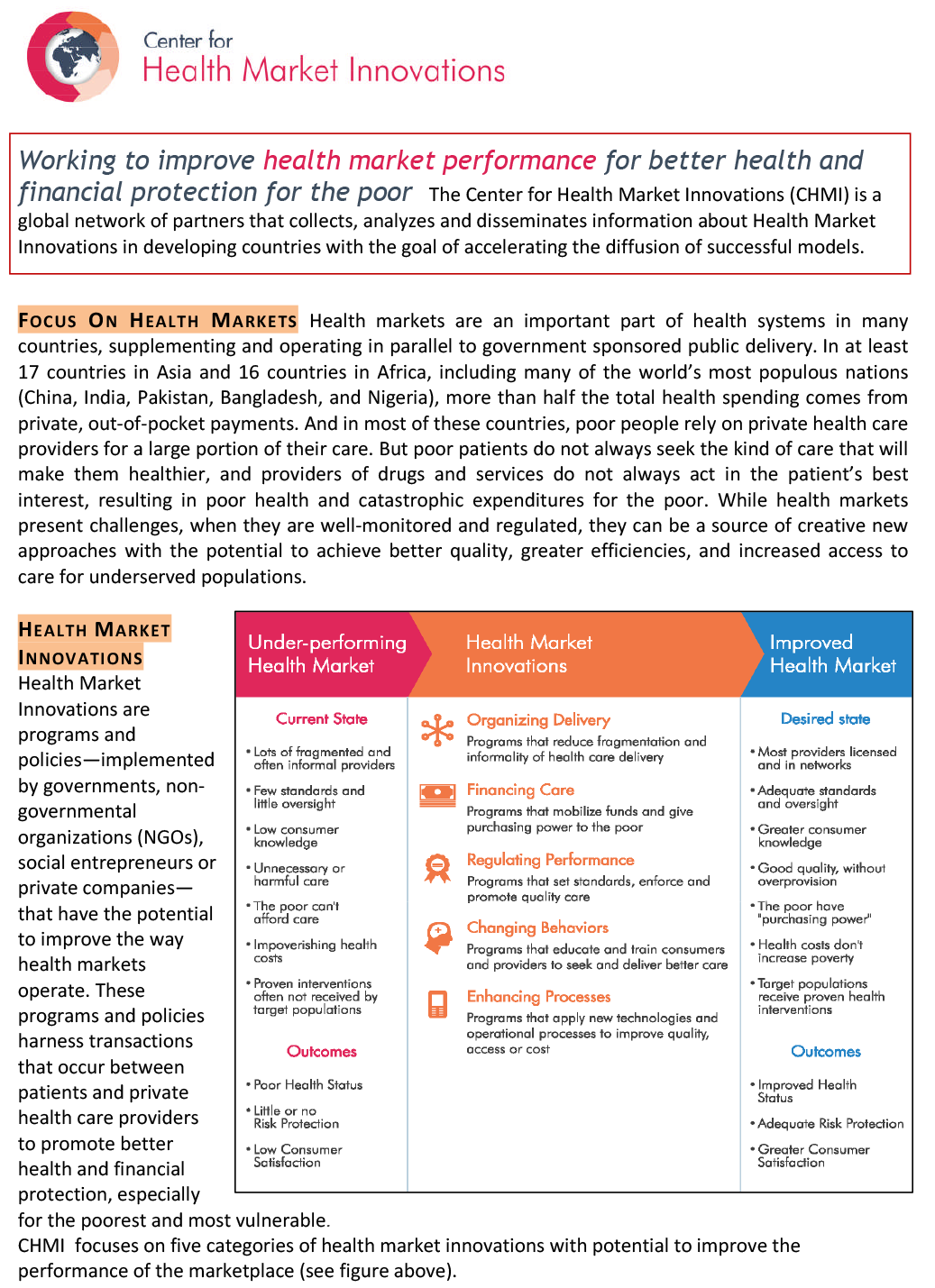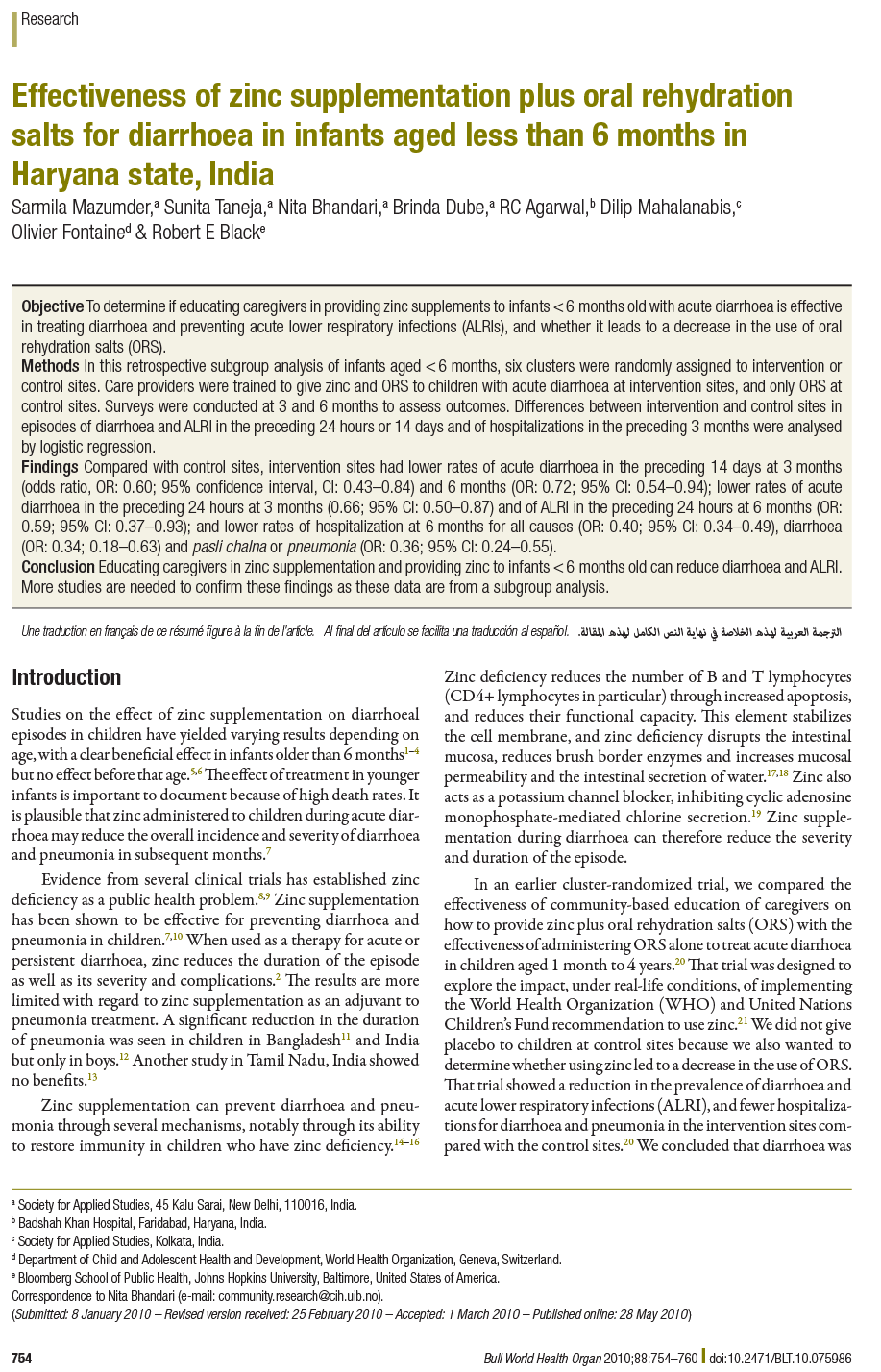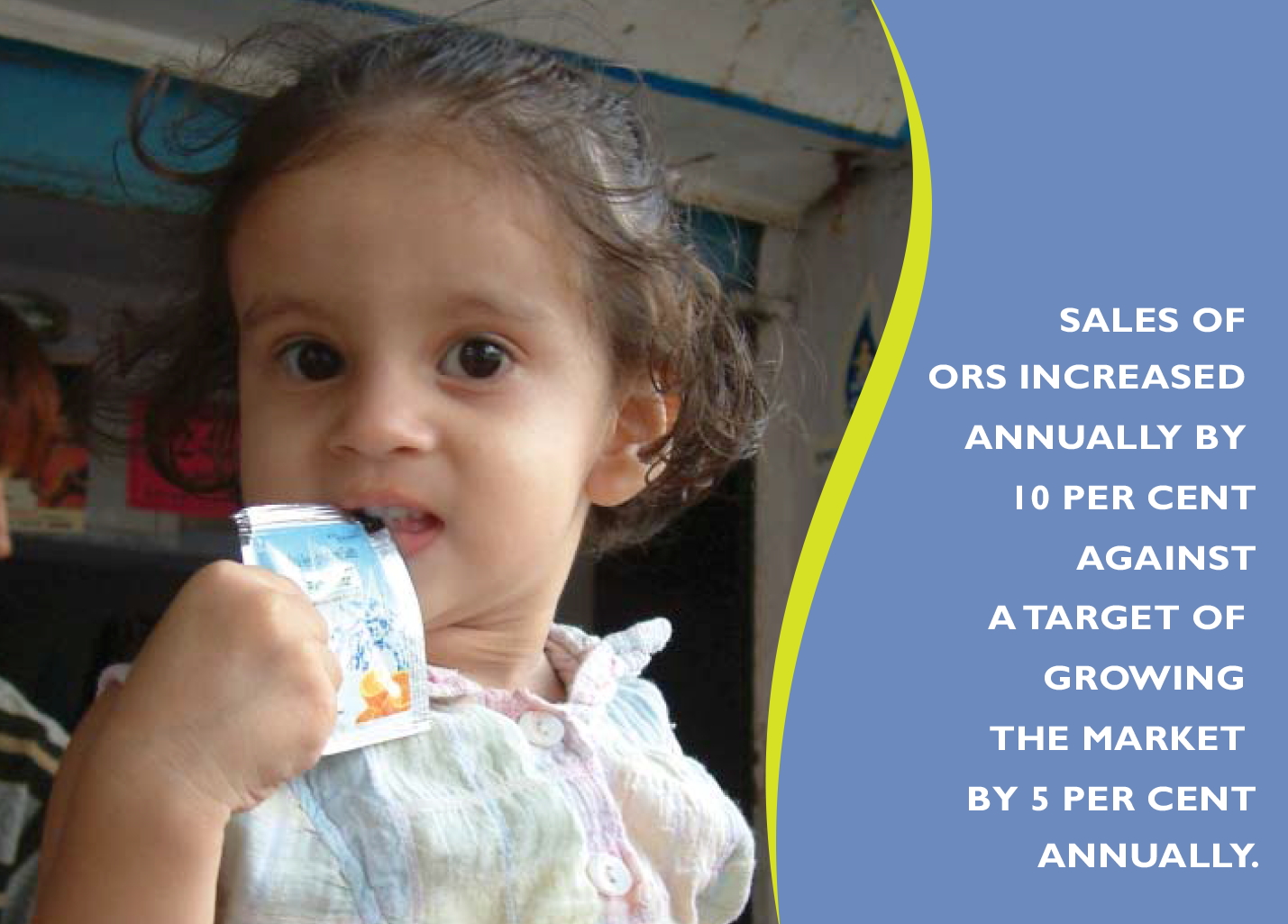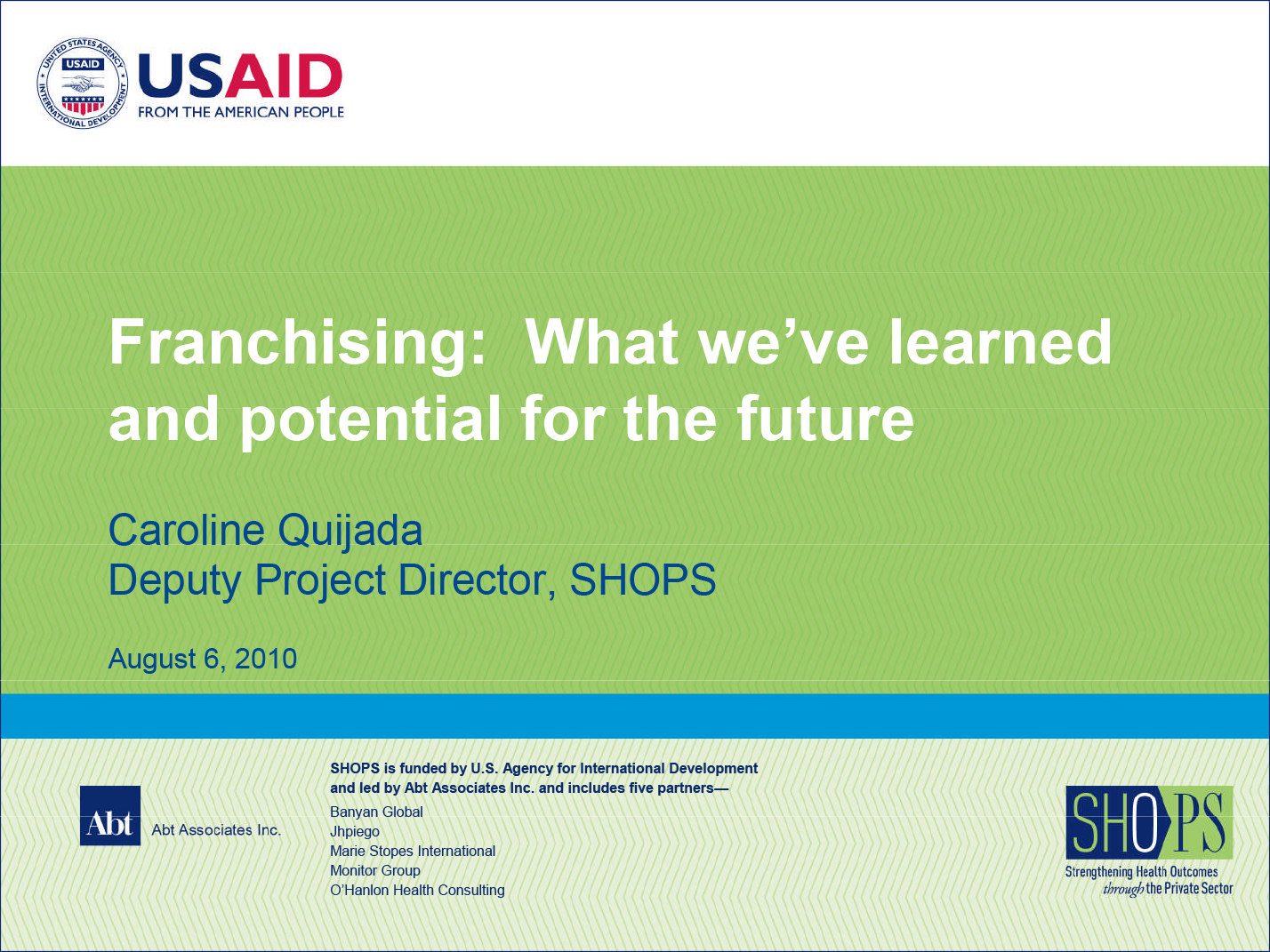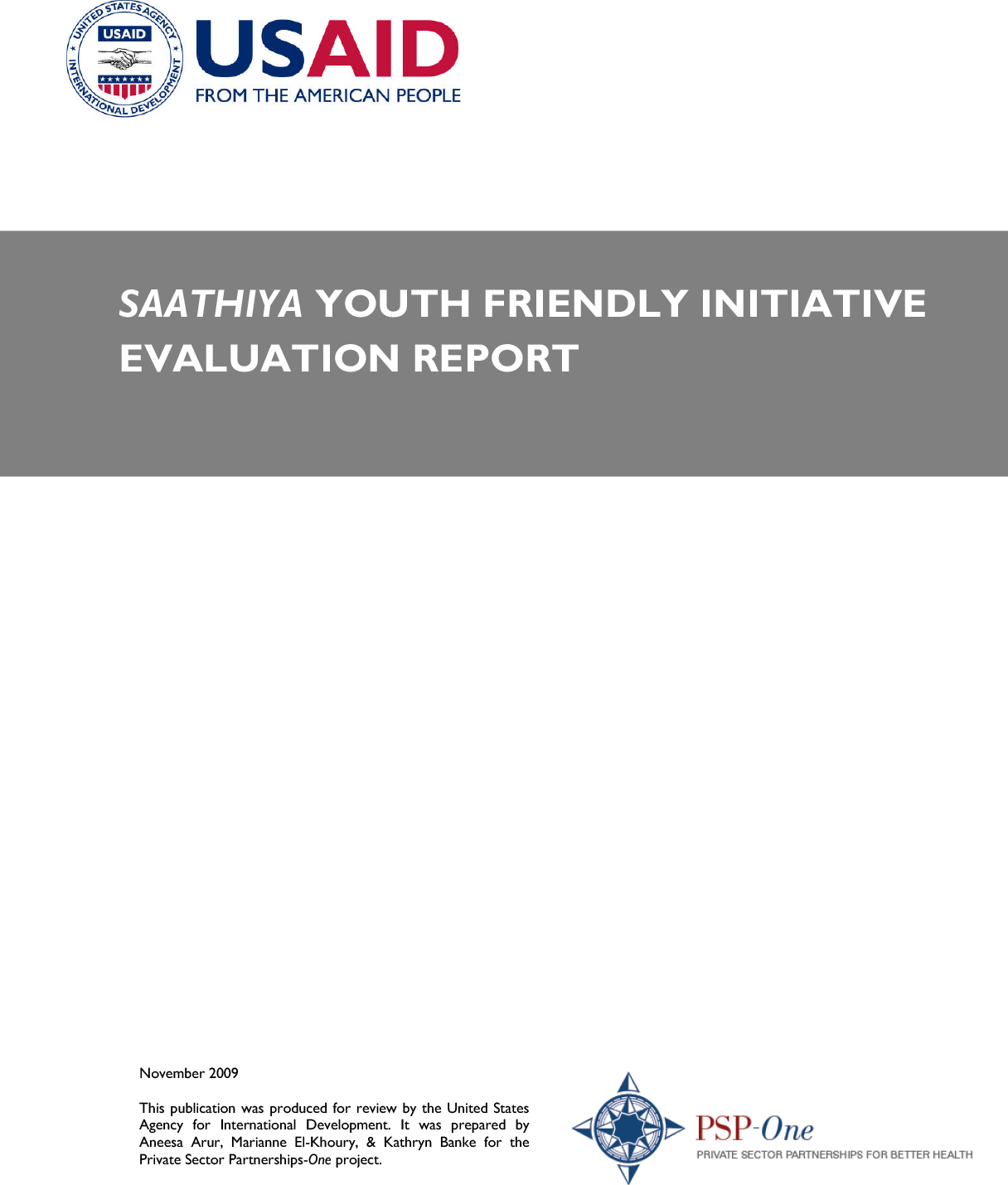
Resource Library
Public-Private Partnership Model for Point-of-Use Water Disinfection among Lower Income Households
A tenant of AED is to use multiple brands and multiple partners to allow consumers to choose the option that best fits their needs. Under the POUZN project, AED utilized micro-finance strategies to enable the commercial sector to reach BOP users in India to purchase point-of-use (POU) water purification systems. In this project, AED partnered with filter manufacturers Hindustan Unilever and Eureka Forbes, chlorine manufacturer Medintech, and chlorine distributor PSI to offer products at various price points, focusing on generating sustainable private sector demand. At the end of project, of the 1.1 million people targeted, POUZN saw a 20% adoption rate of POU water purification methods, comprising largely of chlorine (liquid and tablet) and urban filters. Other NGOs adopted technology developed under POUZN, and lessons learned may be found in the attached document.
Resource Type : Report
Country : India
Year : 2011-06-01T17:27:00
Language : English
Project : SHOPS

Resource Library
Center for Health Market Innovations Brochure
Gina Lagomarsino, a Managing Director at Results for Development (R4D) Institute, introduced PSWG members to the Center for Health Market Innovations (CHMI) program. The CHMI is a global network of partners that collects, analyzes and disseminates information about Health Market Innovations in developing countries, with the goal of accelerating the diffusion of successful models to improve health and financing protection for the poor. Essentially, this project seeks to highlight programs with the potential to replicate and serve more people, and to create linkages between donors, investors, researchers, policy makers and implementing partners through a comprehensive online database of programs. To date, CHMI has partnered with eight on-the-ground organizations that are helping to identify promising health market innovations in and around Bolivia, India, Indonesia, Kenya, Pakistan, Philippines, South Africa, and Vietnam. CHMI's online programs database now houses information about more than 700 programs--and is constantly growing. The number of users has tripled in the last three months, with users now in 153 countries. The CHMI website also has a blog where users are able to capture and share information. Visit CHMI's website at http://healthmarketinnovations.org/.
Resource Type : Brochure/Postcard
Country :
Year : 2011-05-24T12:00:00
Language : English
Project : SHOPS

Resource Library
Effectiveness of Zinc Supplementation Plus Oral Rehydration Salts for Diarrhoea in Infants Aged Less than 6 Months in Haryana State, India
Objective: To determine if educating caregivers in providing zinc supplements to infants <6 months old with acute diarrhoea is effective in treating diarrhoea and preventing acute lower respiratory infections (ALRIs), and whether it leads to a decrease in the use of oral rehydration salts (ORS).
Methods: In this retrospective subgroup analysis of infants aged <6 months, six clusters were randomly assigned to intervention or control sites. Care providers were trained to give zinc and ORS to children with acute diarrhoea at intervention sites, and only ORS at control sites. Surveys were conducted at 3 and 6 months to assess outcomes. Differences between intervention and control sites in episodes of diarrhoea and ALRI in the preceding 24 hours or 14 days and of hospitalizations in the preceding 3 months were analysed by logistic regression.
Findings: Compared with control sites, intervention sites had lower rates of acute diarrhoea in the preceding 14 days at 3 months (odds ratio, OR: 0.60; 95% confidence interval, CI: 0.43–0.84) and 6 months (OR: 0.72; 95% CI: 0.54–0.94); lower rates of acute diarrhoea in the preceding 24 hours at 3 months (0.66; 95% CI: 0.50–0.87) and of ALRI in the preceding 24 hours at 6 months (OR: 0.59; 95% CI: 0.37–0.93); and lower rates of hospitalization at 6 months for all causes (OR: 0.40; 95% CI: 0.34–0.49), diarrhoea (OR: 0.34; 0.18–0.63) and pasli chalna or pneumonia (OR: 0.36; 95% CI: 0.24–0.55).
Conclusion: Educating caregivers in zinc supplementation and providing zinc to infants <6 months
This report was contributed as a resource for the SHOPS Zinc e-Conference held on June 1-2, 2011.
Resource Type : Brief
Country : India
Year : 2011-06-01T00:00:00
Language : English
Project : SHOPS

Resource Library
Saathi Bachpan Ke
A brochure contributed for the SHOPS Zinc e-Conference held on June 1-2, 2011.
Resource Type : Brochure/Postcard
Country :
Year : 2011-06-01T00:00:00
Language : English
Project : SHOPS

Resource Library
LifeSpring Hospital's Pathway to Growth
A narrated presentation contributed by Tricia Morente of LifeSpring Hospital to the SHOPS Access to Finance e-Conference held on March 29-30, 2011. To view the narrated presentation from the Access to Finance e-Conference, please visit: http://icohere-presentations.com/Presentations/SHOPS/2011/A2F/Morente/player.html.
Resource Type : Presentation
Country :
Year : 2011-03-29T00:00:00
Language : English
Project : SHOPS

Resource Library
Maternal Health Financing-Issues and Options: A Study of Chiranjeeri Yojana in Gujarat
A report by the Indian Institute of Management contributed a cross-cutting resource for the PSP-One Social Marketing e-Conference held March 10-15, 2008.
Resource Type : Report
Country :
Year : 2008-03-17T00:00:00
Language : English
Project : SHOPS

Resource Library
Franchising: What We've Learned and Potential for the Future
Powerpoint presentation developed by Caroline Quijada, SHOPS Project Deputy Director, for the USAID Private Sector Approaches to Health Workshop held August 6th, 2010. This presentation examines basic concepts around franchises, benefits of social franchises and what has been achieved, and emerging commercial models in the field.
Resource Type : Presentation
Country : India, Kenya
Year : 2010-08-13T10:30:00
Language : English
Project : SHOPS

Resource Library
Private Sector Utilization of HIV/AIDS Services and Health Expenditures By People Living with HIV/AIDS in India: Findings from Five High-Prevalence States
Human immunodeficiency virus (HIV) infection and acquired immunodeficiency syndrome (AIDS) are a critical challenge in India with an estimated 2.4 million people living with HIV/AIDS in 2007. Approximately two-thirds (65 percent) of people living with HIV/AIDS (PLWHIV) are in five high-prevalence states: Andhra Pradesh, Karnataka, Maharashtra, Manipur, and Tamil Nadu. The private health sector in India is large and heterogeneous and has grown considerably over time. The proportion of private health expenditures is also high in India and households bear nearly 75 percent of all health expenditures. However, little is known about the private sector's role in delivering HIV/AIDS-related services or about health expenditures by PLWHIV in India. This report seeks to address this information gap by examining two existing data sources: • Utilization of HIV testing and sexually transmitted infection (STI) treatment services from public, private for-profit, and private non-profit sources in the National Family Health Survey 2005-2006 (NFHS-3) •Health expenditures by PLWHIV in the United Nations Development Program (UNDP) 2006 Socio-Economic Impact Study of HIV/AIDS Uptake of HIV/AIDS testing services is relatively low in India. However, our analysis showed that the private for-profit sector was the dominant source of HIV testing for men in all states except Manipur and for women in all states except Manipur and Tamil Nadu. In most states the private for-profit sector accounted for over 50 percent of HIV testing. Of the poorest men and women who were ever tested for HIV, 40 percent and 30 percent, respectively, reported receiving their test at a for-profit facility. Interestingly, the non-profit sector accounted for a very small proportion of HIV testing: it provided less than 3 percent and 6 percent of HIV tests to ever-tested men and women, and was also a very small source of HIV testing to the poorest men and women.
Resource Type : Report
Country : India
Year : 2009-12-07T10:30:00
Language : English
Project : SHOPS

Resource Library
Saathiya Youth Friendly Initiative Evaluation Report
Currently married youth in India have considerable unmet need for family planning (FP) and low levels of modern FP use. 27% of currently married 15-19 year old women have unmet need for FP and only 7% report current use of a modern FP method (NFHS-3). The Saathiya Youth-friendly Initiative (YFI) is a social marketing approach that seeks to improve both the supply of and demand for contraceptive services and methods thereby improving use of modern FP among currently married youth in India. Core Saathiya YFI activities included the following: (a) Creating and training a network of providers in youth-friendly counseling and contraception provision. The network includes a total of 304 network chemists, 315 Indigenous Systems of Medicine and Homeopathy doctors (ISM&H) and 218 OB/GYNs and General Practitioners (GPs) in Lucknow city. Network providers were also supported with signage and other materials to help consumers identify them as "youth-friendly" Saathiya providers; (b) Promoting a basket of reversible and modern contraceptives through Saathiya providers; (c) Creating a referral system within the Saathiya network; (d) Implementing a toll-free telephone helpline with trained counselors to provide FP information, counseling and refer to Saathiya providers if necessary; (e) Advertising and communication activities to build awareness of the Saathiya brand and generate demand for Saathiya providers.
Resource Type : Report
Country : India
Year : 2009-12-07T09:30:00
Language : English
Project : SHOPS

Resource Library
Private Sector Utilization of HIV/AIDS Services & Health Expenditures by People Living with HIV/AIDS in India: Findings from Five High-Prevalence States (Brief)
HIV/AIDS is a critical challenge in India with an estimated 2.4 million people living with the disease in 2007 (UNAIDS/WHO 2008). A majority (65 percent) of people living with HIV (PLWHIV) live in five high-prevalence states: Andhra Pradesh, Karnataka, Maharashtra, Manipur, and Tamil Nadu (Pandey et al. 2009). As more PLWHIV begin antiretroviral therapy (ART), the corresponding needs for regular care to monitor progression of the disease are likely to place additional burdens on the health care system. As such, it is important to understand the current and potential roles of the public and private health care sectors in meeting these needs.
Resource Type : Brief
Country : India
Year : 2009-10-21T15:45:00
Language : English
Project : SHOPS
Pagination
- Previous page
- Page 11
- Next page

